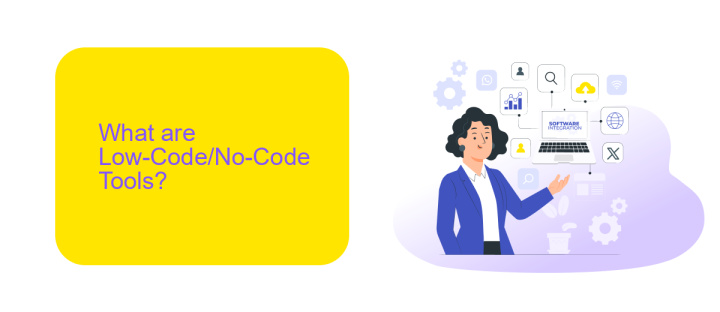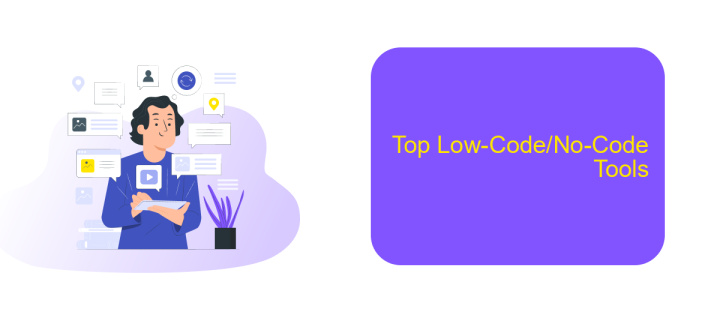Best Low-Code No-Code Tools
In today's fast-paced digital landscape, the demand for rapid application development has never been higher. Low-code and no-code tools have emerged as game-changers, empowering users to create sophisticated applications with minimal coding expertise. This article explores the best low-code no-code tools available, highlighting their features, benefits, and how they can revolutionize your development process.
Introduction
In today's fast-paced digital landscape, businesses and individuals are increasingly turning to low-code and no-code tools to accelerate development and streamline workflows. These platforms empower users to create applications, automate processes, and integrate services without the need for extensive programming knowledge.
- Enhanced productivity: Rapidly build and deploy applications.
- Cost-effective: Reduce the need for expensive development resources.
- Accessibility: Enable non-technical users to participate in development.
- Flexibility: Easily adapt to changing business requirements.
One notable tool in this space is ApiX-Drive, which simplifies the integration of various services and applications. With ApiX-Drive, users can effortlessly connect different platforms, automate data transfers, and create seamless workflows, all without writing a single line of code. As businesses continue to seek efficient solutions, the adoption of low-code and no-code tools is set to rise, driving innovation and operational efficiency.
What are Low-Code/No-Code Tools?

Low-Code/No-Code tools are platforms that allow users to create applications and automate workflows with minimal or no coding knowledge. These tools provide a visual interface where users can drag and drop components, design workflows, and configure integrations, significantly reducing the time and effort required to develop software solutions. They are especially beneficial for businesses looking to accelerate digital transformation, enabling non-technical staff to participate in the development process.
One key advantage of Low-Code/No-Code tools is their ability to integrate with various services and APIs, streamlining operations and enhancing productivity. For instance, ApiX-Drive is a service that facilitates seamless integrations between different applications, allowing users to automate data transfers and synchronize information across platforms effortlessly. By leveraging such tools, organizations can achieve greater agility and responsiveness, adapting quickly to changing business needs without the bottlenecks associated with traditional software development.
Benefits of Low-Code/No-Code Tools

Low-code and no-code tools offer a range of benefits that make them increasingly popular among businesses of all sizes. These platforms enable users to build applications quickly and efficiently, even without extensive programming knowledge. By simplifying the development process, companies can reduce their reliance on specialized IT staff and accelerate time-to-market for new solutions.
- Cost Efficiency: Reduces development costs by minimizing the need for specialized developers.
- Speed: Speeds up the application development process, allowing for quicker deployment.
- Accessibility: Empowers non-technical users to create and manage applications.
- Flexibility: Offers easy customization and scalability to meet changing business needs.
- Integration: Simplifies the integration of various services and APIs, such as ApiX-Drive, to streamline workflows.
Overall, low-code and no-code tools democratize the development process, making it accessible to a broader range of users. This not only fosters innovation but also allows businesses to respond more swiftly to market changes and customer demands. By leveraging these tools, companies can focus more on strategic initiatives and less on the complexities of traditional software development.
Top Low-Code/No-Code Tools

Low-code and no-code tools are revolutionizing the way businesses approach software development, allowing non-technical users to create applications without extensive coding knowledge. These platforms offer intuitive interfaces, drag-and-drop features, and pre-built templates to streamline the development process.
Among the top low-code and no-code tools, several stand out for their robust features and user-friendly designs. These tools empower businesses to quickly develop and deploy applications, automate workflows, and integrate various services without the need for a dedicated development team.
- Appgyver
- Bubble
- OutSystems
- Microsoft Power Apps
- ApiX-Drive
Each of these tools offers unique functionalities. For instance, ApiX-Drive excels in setting up integrations, enabling seamless connectivity between various services and applications. By leveraging these tools, businesses can significantly reduce development time and costs, while still delivering high-quality solutions tailored to their specific needs.
Case Studies and Applications
One notable case study involves a leading retail company that utilized a low-code platform to streamline their inventory management system. By employing a visual development interface, the company was able to rapidly prototype and deploy a custom solution that integrated seamlessly with their existing ERP software. This not only reduced development time by 60% but also significantly improved inventory accuracy and operational efficiency.
Another compelling example is a healthcare provider that leveraged a no-code tool to create a patient appointment scheduling app. The drag-and-drop functionality enabled non-technical staff to build and customize the app according to specific needs. Additionally, by using ApiX-Drive, the healthcare provider could easily integrate the app with their existing CRM and email systems, automating appointment reminders and follow-ups. This resulted in a 40% reduction in missed appointments and enhanced patient satisfaction.
FAQ
What are low-code and no-code tools?
How do low-code and no-code tools benefit businesses?
Can low-code and no-code tools be used for complex applications?
Are these tools secure for business use?
How can I integrate different applications using low-code or no-code tools?
Time is the most valuable resource for business today. Almost half of it is wasted on routine tasks. Your employees are constantly forced to perform monotonous tasks that are difficult to classify as important and specialized. You can leave everything as it is by hiring additional employees, or you can automate most of the business processes using the ApiX-Drive online connector to get rid of unnecessary time and money expenses once and for all. The choice is yours!

